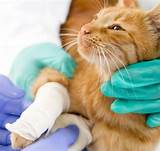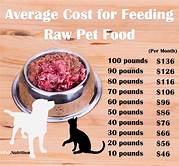Can You Get Pet Insurance?
Pet insurance is a type of insurance that helps cover the costs of veterinary care for your pet. It can help you save money on unexpected veterinary bills, and it can also give you peace of mind knowing that your pet is covered in case of an accident or illness.

What Types of Pet Insurance Are There?
There are two main types of pet insurance: accident-only and comprehensive.
Accident-only pet insurance covers the costs of veterinary care for accidents, such as broken bones, lacerations, and poisoning. It does not cover the costs of illnesses, such as cancer, diabetes, and kidney disease.
Comprehensive pet insurance covers the costs of veterinary care for both accidents and illnesses. It also typically includes coverage for preventive care, such as vaccinations, dental cleanings, and flea and tick treatments.
How Much Does Pet Insurance Cost?
The cost of pet insurance varies depending on the type of coverage you choose, the age and breed of your pet, and the deductible you choose. In general, accident-only pet insurance is less expensive than comprehensive pet insurance. The younger and healthier your pet is, the less expensive your pet insurance will be.
What Are the Benefits of Pet Insurance?
There are many benefits to pet insurance, including:
- Peace of mind: Knowing that your pet is covered in case of an accident or illness can give you peace of mind.
- Financial protection: Pet insurance can help you save money on unexpected veterinary bills.
- Coverage for preventive care: Some pet insurance policies cover the costs of preventive care, such as vaccinations, dental cleanings, and flea and tick treatments.
- Reimbursement for lost or stolen pets: Some pet insurance policies offer reimbursement for lost or stolen pets.
What Are the Drawbacks of Pet Insurance?
There are also some drawbacks to pet insurance, including:
- Cost: Pet insurance can be expensive, especially if you choose a comprehensive policy.
- Deductible: Most pet insurance policies have a deductible, which is the amount you have to pay out of pocket before the insurance company starts to pay for your pet's veterinary care.
- Exclusions: Most pet insurance policies have exclusions, which are conditions that are not covered by the policy. For example, some pet insurance policies do not cover pre-existing conditions.
- Waiting period: Most pet insurance policies have a waiting period, which is the amount of time you have to wait before your pet's coverage starts. Waiting periods can range from a few days to a few weeks.
Is Pet Insurance Right for You?
Whether or not pet insurance is right for you depends on your individual circumstances. If you are on a tight budget, you may not be able to afford pet insurance. However, if you are willing to pay for the peace of mind and financial protection that pet insurance offers, it may be a good option for you.
Declaration: All article resources on this website, unless otherwise specified or labeled, are collected from online resources. If the content on this website infringes on the legitimate rights and interests of the original author, you can contact this website to delete it.




